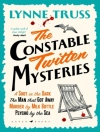In ’Good Old Anna, ’ Marie Belloc Lowndes crafts an evocative narrative that intertwines the lives of its characters with the themes of loyalty, social class, and the dynamics of human relationships. Set against the backdrop of early 20th-century England, the novel employs a rich, descriptive prose style that highlights the subtleties of emotion and societal norms. Lowndes’s work, situated within the literary context of the domestic realism movement, offers a keen observation of the personal struggles that define ordinary lives, revealing the extraordinary within the mundane circumstances of her characters’ existences. Marie Belloc Lowndes, an accomplished author and playwright, is known for her deep understanding of human psychology and social intricacies, drawn from her own experiences as a member of the literary elite in London. Having worked as a journalist and with notable connections in literary circles, Lowndes’s insights into the complexities of relationships and class tensions inform her writing, making ’Good Old Anna’ a significant exploration of the socio-cultural landscape of her time. This novel is recommended for readers interested in character-driven stories that reflect on loyalty and social class, offering a timeless examination of human connections. Lowndes’s engaging narrative style coupled with her perceptive observations makes this book a compelling addition to any reader’s collection.
Om författaren
Marie Belloc Lowndes (1868 – 1947) was a prolific English novelist and writer, acclaimed for her psychological thrillers and mystery novels. Born in Marylebone, London, she was the daughter of French barrister Louis Belloc and English feminist Bessie Parkes Belloc. Her early literary endeavors were influenced by her brother, the poet and author Hilaire Belloc, and she eventually carved out a distinct niche for herself in the literary world. Lowndes is best recognized for her novel ’The Lodger’ (1913), which was inspired by the Jack the Ripper murders and has seen various adaptation forms, including Alfred Hitchcock’s 1927 silent film ’The Lodger: A Story of the London Fog.’ Another notable work, ’Good Old Anna’ (1915), showcases her ability to delve into the human psyche, reflecting societal attitudes during the First World War through the eyes of its German protagonist. Lowndes was renowned for her acute observation and complex characterizations, contributing over forty novels and numerous short stories to English literature. Her works are characterized by a haunting narrative style and an exploration of the darker sides of humanity, which established her as an influential figure in the development of the early 20th-century mystery and thriller genres.












